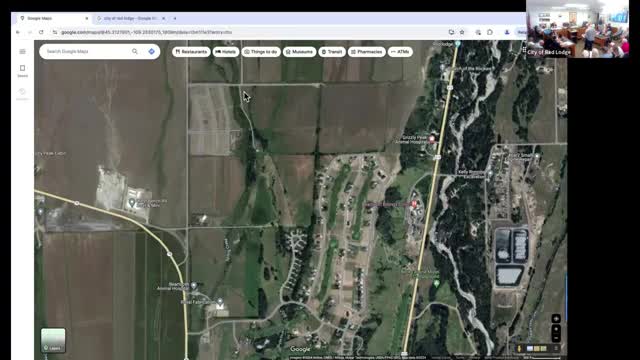City debates zoning changes to tackle housing affordability
July 12, 2024 | Red Lodge, Carbon County, Montana

This article was created by AI summarizing key points discussed. AI makes mistakes, so for full details and context, please refer to the video of the full meeting. Please report any errors so we can fix them. Report an error »

In a recent government meeting, officials discussed a proposed zoning change that could significantly impact housing development in the area. The conversation centered around the need for increased housing density to address rising construction costs and meet annexation agreements, with a focus on transitioning from three-unit to four-unit zoning classifications.
City officials highlighted the necessity of adapting zoning regulations to facilitate more efficient land use, citing that higher density could help achieve affordability in housing. However, some council members expressed skepticism about the justification for a blanket zoning change over a substantial 87-acre area, questioning whether the proposed adjustments would adequately address potential impacts on traffic, water supply, and infrastructure.
Concerns were raised regarding discrepancies in the proposed zoning map and the legal descriptions provided, prompting calls for clarification on the exact boundaries of the rezoning. The discussion also touched on the existing zoning allowances, which permit multiple units on a single lot under certain conditions, suggesting that the current framework may already support diverse housing options without necessitating a comprehensive change.
As the meeting progressed, officials acknowledged the complexities of the zoning process, noting that while state statutes allow for separate reviews, there is often a push to combine them for efficiency. The debate underscored the challenges of balancing development needs with community concerns, as stakeholders seek to navigate the intricacies of zoning regulations in pursuit of sustainable growth.
City officials highlighted the necessity of adapting zoning regulations to facilitate more efficient land use, citing that higher density could help achieve affordability in housing. However, some council members expressed skepticism about the justification for a blanket zoning change over a substantial 87-acre area, questioning whether the proposed adjustments would adequately address potential impacts on traffic, water supply, and infrastructure.
Concerns were raised regarding discrepancies in the proposed zoning map and the legal descriptions provided, prompting calls for clarification on the exact boundaries of the rezoning. The discussion also touched on the existing zoning allowances, which permit multiple units on a single lot under certain conditions, suggesting that the current framework may already support diverse housing options without necessitating a comprehensive change.
As the meeting progressed, officials acknowledged the complexities of the zoning process, noting that while state statutes allow for separate reviews, there is often a push to combine them for efficiency. The debate underscored the challenges of balancing development needs with community concerns, as stakeholders seek to navigate the intricacies of zoning regulations in pursuit of sustainable growth.
View full meeting
This article is based on a recent meeting—watch the full video and explore the complete transcript for deeper insights into the discussion.
View full meeting
